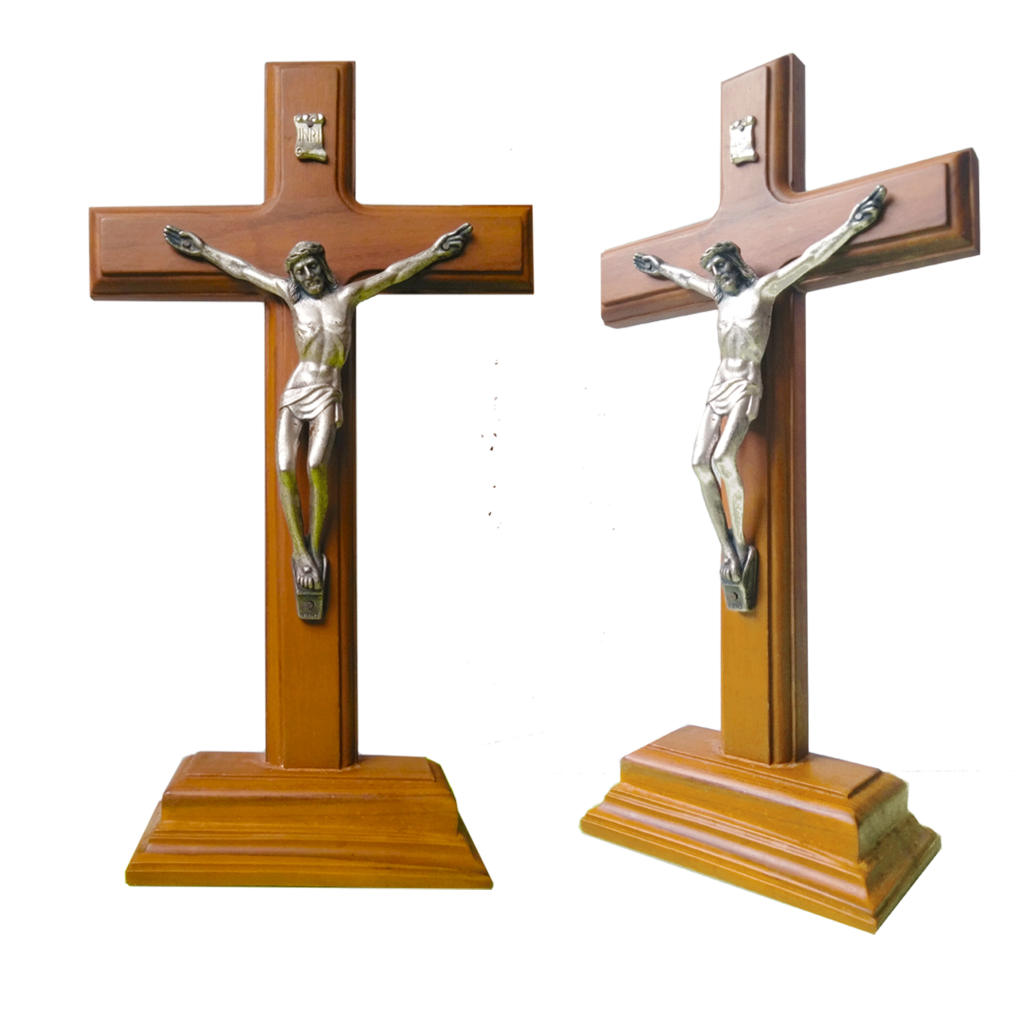The crucifix has an interesting history. Crucifixes dating back to Emperor Constantine’s time (4th century A.D.) typically didn’t display Jesus suffering on the cross. For several centuries after Constantine, the crucifix depicted Jesus alive, with his eyes open and arms extended. The image of Jesus triumphing over evil and death was preferred over the image of Jesus in agony. Many Romanesque wall crucifixes showed Jesus wearing a royal crown; Gothic types later replaced the royal crown for a crown of thorns. It wasn’t until around the 9th century when artists began to depict the realistic aspects of Christ’s suffering and death.
INRI
 At the top of many crucifixes are the initials: I.N.R.I. The initials stand for the Latin phrase, Iesus Nazarenus Rex Iudaeorum, meaning Jesus the Nazarene, King of the Jews. It was posted on the cross above Jesus’ head at the request of Pontius Pilate.
At the top of many crucifixes are the initials: I.N.R.I. The initials stand for the Latin phrase, Iesus Nazarenus Rex Iudaeorum, meaning Jesus the Nazarene, King of the Jews. It was posted on the cross above Jesus’ head at the request of Pontius Pilate.
Display Your Crucifix
 Many Catholics have a beautiful crucifix in their home that can be seen as soon as someone enters their doorway. These crucifixes serve as a daily reminder of their faith.
Many Catholics have a beautiful crucifix in their home that can be seen as soon as someone enters their doorway. These crucifixes serve as a daily reminder of their faith.
Where you display your wall crucifix in your home is a personal preference. Some people like to display it in their main living area, while others like to create a private area where they can sit in quiet reflection. Crucifixes come in many sizes, materials, colors, and finishes to complement your home décor or personal taste.
